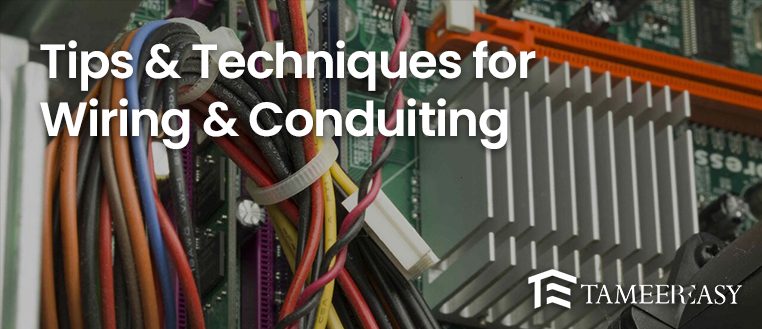Wiring and conduiting is a necessary house-building process responsible for supplying electricity to all electrical appliances. With an effective system, you can get an uninterrupted supply eradicating the risks of high voltage and electricity blackouts.
It is quite a complex procedure which should be carried out using extreme care and professional services. Here in this article, we will let you know about some crucial tips and techniques by which you can get the best system installed and a smooth electricity supply.
Best Tips and Techniques for Wiring and Conduiting Installation
So here are some of the best tips and techniques to follow during wiring. If you are planning to build a house, we recommend you read them to get an efficient system installed at your home.
1. Plan and Design the Wiring Layout
Before you start installing wiring and conduiting, it’s essential to plan and design the wiring layout. This includes identifying the points where you are going to install wiring.
2. Use the Right Size Wires for Each Circuit
Use the right size wires for each circuit. The size of the wire will depend on the electrical load it will carry. Larger wires are needed for high-power circuits, and smaller wires for low-power circuits.
3. Use a Conduit for Wiring
A conduit protects the wiring from damage, making replacing or upgrading later easier. It also makes it easier to locate specific wires. So always use conduits to ensure a better wiring system.
4. Use a Voltage Detector
A voltage detector is essential for working with electrical wiring. It will alert you if the voltage is present, which could cause harm.
5. Install the Conduit Properly
The conduit should be installed properly to avoid any damage or interference with the wiring. Secure it tightly to the wall using conduit clamps.
6. Use Wire Connectors
Use wire connectors to connect the wires inside the conduit. This will protect the cables from any damage and prevent them from touching each other.
7. Label the Wires
Label the wires inside the conduit to make it easy to identify them later. This will save you time and effort when making changes or repairs.
8. Keep Wires Organised
Keep the wires organised and neat inside the conduit. Use zip ties or tape to keep them in place and avoid a tangled mess.
9. Install GFCI Outlets
Install Ground Fault Circuit Interrupter (GFCI) outlets in areas exposed to moisture, such as bathrooms, kitchens, and outdoor spaces. This will protect you from electrical shocks.
10. Hire a Licensed Electrician for Complex Installations
If the installation is complex, consider hiring a licensed electrician to do the job. They have the necessary knowledge and experience to complete the installation safely and correctly.
Closing Remarks
In a nutshell, wiring and conduiting are essential for ensuring a smooth electricity supply to all your appliances. We have listed the best tips and techniques for installing this system which you must consider before starting this process.








